Dissecting Garrett Oliver’s “Beer Expert Guesses Cheap vs Expensive Beer”
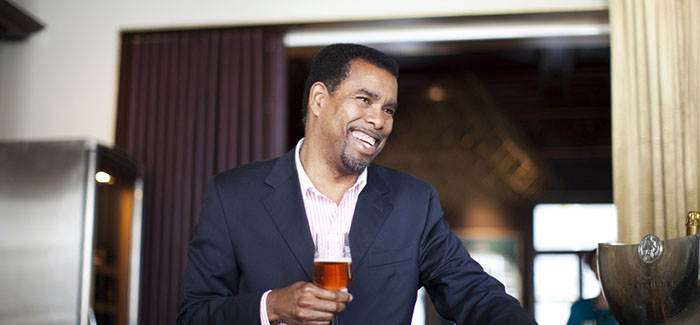
- Scott Johnson
- On December 17, 2018
- FacebookTwitterInstagram
If you’ve been paying attention to the Gourmet YouTube scene, many classic publications are rejuvenating themselves through spectacular new digital content series. Bon Appétit has been pushing forward with glorious junk food recreations in “Gourmet Makes” and fermentation experimentation in “It’s Alive With Brad.” America’s Test Kitchen has transitioned to online magnificently through highly informative videos on products and cooking techniques. But the series that’s been most interest in terms of flavor analysis is “Price Points” by recipe index Epicurious.
Price Points is an incredibly addictive series that explores the world of gourmet groceries. Each episode brings in a qualified expert to break down the difference between a high-quality item and a more mass produced grocery item without labels or hints. They handle each subject through a neutral approach, identifying through their senses how manufacturers are able to keep costs so low and how you can get a more artisan approach to certain items.
What makes everything so compelling is that each host offers such a wide range of perspective and their own individual personality. You won’t often buy these products without a label/name attached, but there are certain factors to look for in order to know what products you’re getting. I highly recommend watching the episodes on cheese or ice cream to get a feel over how the series operates. Through tight editing, great close up shots and descriptive explanations, you can really discover a lot of what makes a great product in the same way we love finding good beer. (Plus pretty awesome chalk art.)
So, after watching all these episodes, I was so curious to know when they would cover beer and/or wine. Beer is incredibly subjective; what makes a beer enjoyable for one person may not even factor into how much it costs. Unless you are at a beer tasting or festival, you’re often forced to commit to buying a beer before really unlocking it’s potential. I’ve even gone into detail that world-class beer is judged more so of technicality to style than overall taste. As craft beer drinkers, we’re also hyper aware of how brand loyalty comes into play along with the sheer diversity of brewer’s interpretation. So who do you get to handle such a task? Well, I nearly flipped when I saw a familiar face in the thumbnail…
Garrett Oliver is a superstar of the craft beer world. Brewmaster of Brooklyn Brewing and author of THE ultimate food/beer guide The Brewmaster’s Table. He brings not just a wealth of knowledge to Price Points, but his iconic effortless charm that really makes you pay attention to any beer he’s describing. Oliver pushes the boundaries of researching new flavors with Brooklyn’s eclectic offerings while taking time to educate other people on the joys of beer. He was the editor for The Oxford Companion to Beer and won a prestigious James Beard Award. Hats off to Epicurious getting the right man for the job.
If you’re checking this article out without seeing the video, I implore you to watch it and see how my intrigue into the video comes into play as we watch a master at work. I’ll be also breaking this down from my perspective and experience as a homebrewer.
1. Pilsner
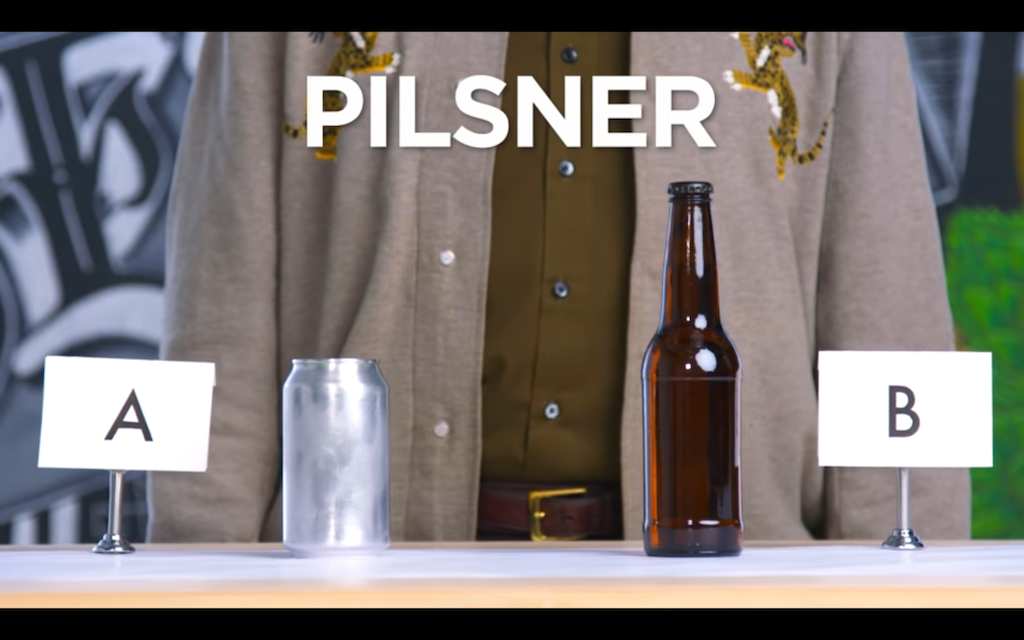
Pilsners are indeed the most popular beer worldwide for good reason. They are clean, crisp, slightly bitter and good for any time of year or day. However, Pilsners can be a paradox in the craft beer world because they are one of the hardest styles to master; taking longer to produce, yet sold for the lowest price point. Pay attention to the mere 67 cent difference between them. It’s fitting for Oliver to break down the style, as Pilsners and other Lagers have come back into fashion after the massive upheaval of balls-to-the-wall IPAs for the past few years.
You really can’t hide behind any gimmicks making a pilsner, so Beer A hits every visual check. There’s no real way to guess what it could be but as Epicurious is based in New York, perhaps it’s from there. When the camera focuses on Beer B, you can see the etchings of a twist-top. It’s a key difference that when Oliver says Beer B is more papery, that’s more of an off-flavor than Beer A’s sulfury notes. Lager yeast can give off a sulfury smell especially when it’s fermenting, but it mostly fades away during the lagering process.
In a way, it would be hard to identify what company makes Beer B because most macro breweries do not technically make pilsners. The category actually falls under “Standard America Beer” applying to American light lagers or adjunct lagers. I realize it’s a very nit-picky thing to say, but it does give me credit to the video producers who didn’t go for the most obvious choice. Basically, if you have an awesome local craft pilsner, you cherish it.
2. Belgian White
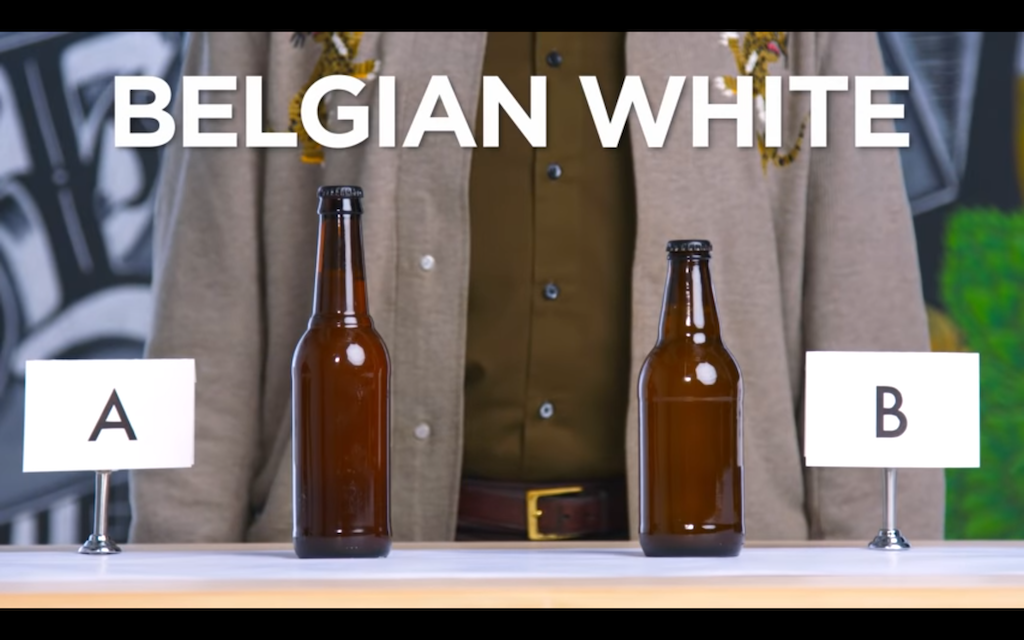
Witbiers are probably the most common gateways from macro to craft, so this style needed to be examined more closely. Oliver refers to these beers in some particularly amusing ways. I’ve never heard “pasta-like” when referring to a beer’s smell before, maybe doughiness if the grain isn’t properly incorporated. I’ve heard on a few occasions that a beer smells like hot dogs, but Oliver does say that comes from just the coriander spice. I’m guessing Beer A is a Shock Top, not quite New Belgium as I first assumed because it’s missing the lettering from the neck ring.
Now from reading some comments in the video, people have been guessing Beer B is the classic Allagash White. Oliver’s smell and expression almost give the look like, “Oh yeah, I know this beer.” But he really breaks down how such an easy, familiar style can have very noticeable differences depending on how it’s brewed. Everything from the color, head retention, and flavor notes indicates two contrasting recipes. Beer B comes ahead at twice the price, but it does make me hope Oliver’s descriptions show why Beer B is worth the money.
3. IPA
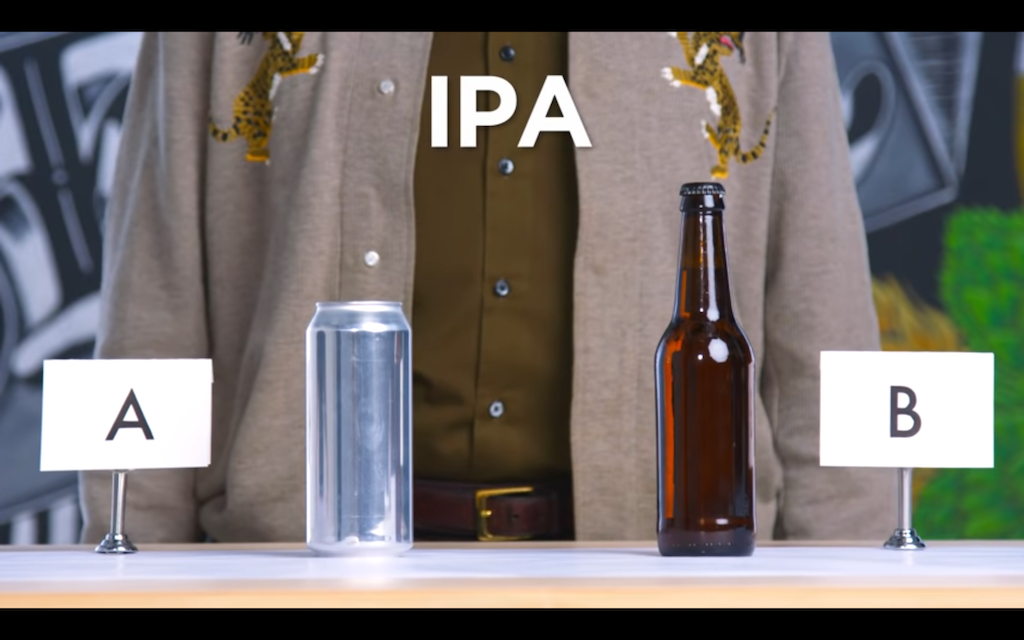
I can see why this section of the video would have the most contention to it. Some experts debate whether the name India Pale Ale derives from transporting the beer between ships during the Indian Spice Trade. Oliver talks more in-depth about the history of the name IPA than getting into how it has branched off into so many unique styles. IPAs are the most open to interpretation in terms of hop usage, yeast and intensity, so I was disappointed in how there wasn’t a ton of break down between the multitudes in selection.
You can see that contrast in style pretty distinctly as soon as both beers are poured. Beer A definitely falls in the vein of the hazy New England-style IPA, whereas Beer B looks and is described more like the classic West Coast IPA. I would even argue that Beer B is probably a Lagunitas since he refers to “hop extracts” which they are famous for using. Both are excellent but they go in completely divergent paths. Look at it in terms of what foods he recommends for the two beers. Beer A’s weighty brightness is going to call for citrus and spices but Beer B’s biscuity bitterness works better with pub food.
This brings out what I feared for most craft beer fans when watching this video that if you check out beer media or study craft beer you can pretty easily get an idea of what’s going to be more pricey. As a homebrewer, I’ve easily spent $20 extra dollars on a 5-gallon batch of NEIPA because of the extra money for Vermont yeast and more hops for secondary.
4. Munich Dark Lager
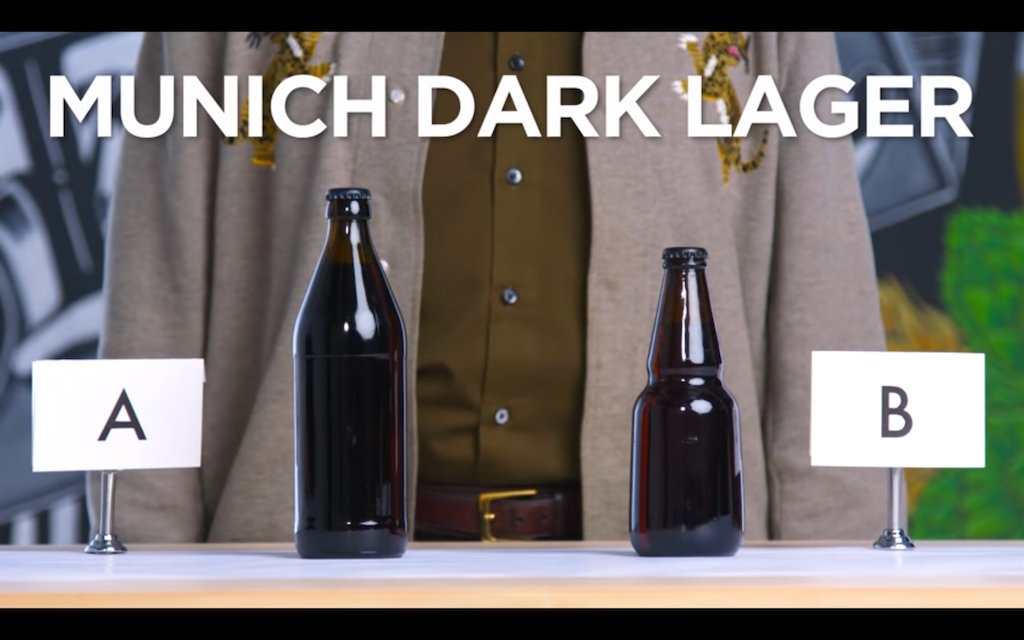
So this style is a very interesting category to break down because Munich dark lagers are not very prevalent amongst craft breweries. On close inspection of the bottles, Bottle B appears to be a Negra Modelo due to the distinctive design and it’s probably the most widely distributed beer of the style in North America. Bottle A looks to be more German so it could be something like an Ayinger, but those beers aren’t always present in bars or bottle shops. In my experience, they can also stick on the shelves for a long period of time because it isn’t a flashy style that’ll grab buyers attention.
Garrett’s joy is really infectious here over Beer A. The use of Munich Malt is very critical to German due to their mildly sweet, bready taste. Munich Malt can be used as a base malt or specialty malt depending on the recipe, which is why it sometimes appears in IPAs or English ales. Beer B sounds more toned down in this respect using less of the Munich malt over pale malt. This is worth pointing out because 2-Row rale malt is the cheapest commercial malt you can find and you can achieve the same dark shade of color by using merely ounces of more potent roasted malts.
What’s fascinating here is that malts can taste slightly different depending on what brand you buy. Briess, Dingeman and Weyermann all have unique countries of origin so the way they process the grain can change the flavor of your beer. It’s something to keep in mind that when you use pounds and pounds of grain to make beer, you really want a good idea of what it tastes like.
I don’t have any criticism here on Oliver’s analysis. If anything, I really want to know what that beer is and try it immediately! German beers aren’t the flashiest but they can really open your eyes to how satisfying beer can taste.
5. Barrel-Aged Beer
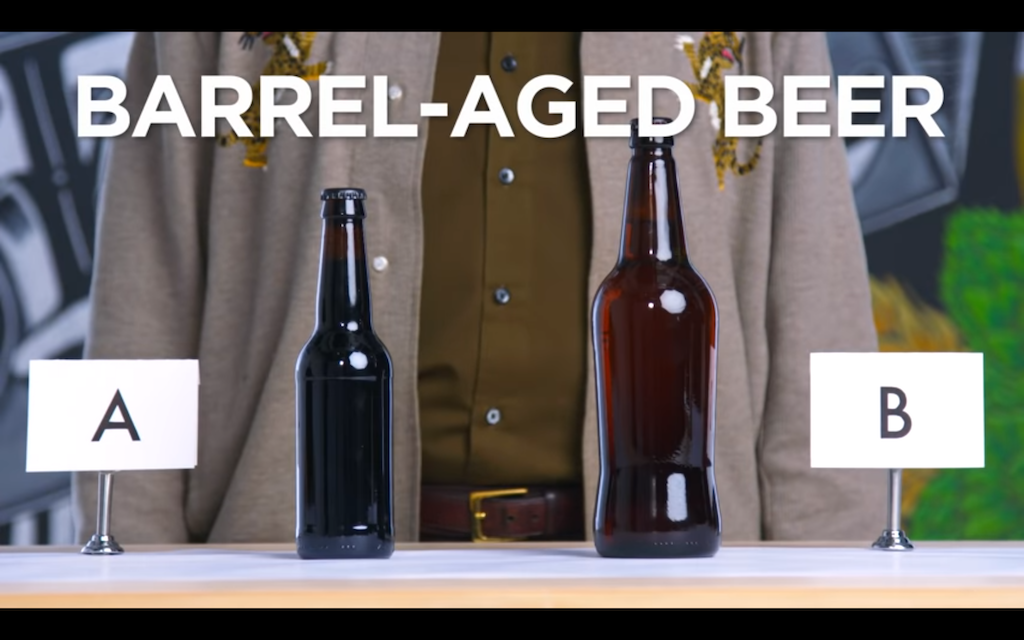
Barrel-aged beers area neat way to explore how far you can take beer from humble beginnings to shattering new heights. Oliver is correct, we’ve been doing barrel-aged beers for 2000 years ranging from cask ales to bourbon barrel-aged beers. Since the two beers appear to be different styles, it’s key to mention that barrel-aged beers are often broken into subcategories so Cicerones can get an idea of how the flavors should interact. The emphasis is on how well the wood transfers flavor into the base beer without mistakes.
Beer B reminds me a lot of an Innis & Gunn shape, which is a brand I’ve never actually had before but they pride themselves on offering lots of barrel-aged selections. The beer also picks up on some reoccurring notes we’ve been finding on inexpensive beers: high sweetness and a simple flavor profile. Beer A is hard to pick out cause Oliver mentions Scotch characteristics which are a lot rarer and not often in 12 oz. bottles. The softness and roundness imparted into the beer are what really elevates barrel aging into a transcendent flavor experience.
Craft beer has really been able to explore how far you can take this concept, experimenting into barrels like gin or tequila and newer distilleries. However, you won’t really find many homebrewers experimenting with barrel-aged beers unless they use chips or are willing invest the time/money as a group project. Typical spirit barrels are 53 gallons! So when tallying out the higher levels of malts, the barrel itself and the longer time investment you really notice why barrel aged beers are such valuable commodities. This isn’t really anything against Beer B, but the wood aspect is much more downplayed against the investment of Beer A.
6. Fruit Sours
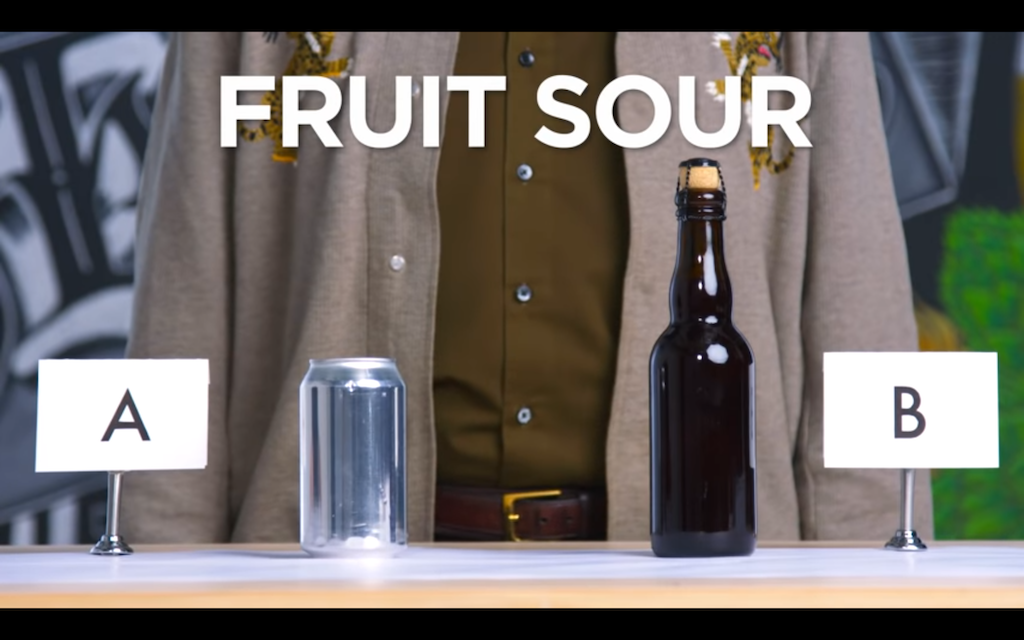
Now this one is almost unfair in because one is in a 12 oz. can and the other is in a 330 ml corked bottle. Price Points will sometimes do this by putting a show-stopper comparison at the end to detail how expensive luxury can be. Fruited sours is the perfect choice for this, like the really high-quality lambics and Gueuzes from Belgian, can go for ridiculously high prices and have expiration dates lasting up to 20 years.
I probably have the biggest amount of complaints on this section as Garrett Oliver doesn’t spend any time differentiating the various kinds of sours. Sour beers have such a wide spectrum of flavors, brewing, and aging methods. Beer A leans more towards a Gose or Berliner Weiss, which many breweries have made trendy because they can be made efficiently through kettle souring. It’s a containable way of making sour beers without risk of cross-contamination or expensive overhead. We drink these beers for their tart refreshment than the decadence of barrel aged sours.
Oliver does acknowledge some of this when analyzing Beer B, pointing out the brownish color and vinegar pungency. The wild yeast, residual sugars and presence of wood can all lend beautiful flavors to enhance the fruit. He’s even flexing the importance that Beer B would be wonderful with aged goat cheese, a recommendation I can perfectly imagine. There’s just no real contest here in what’s going to cost more. If I were to make an educated guess from the bottles and color, I would say that Beer B is one of Firestone Walker’s Barrelworks Wild Ales or from Lost Abbey.
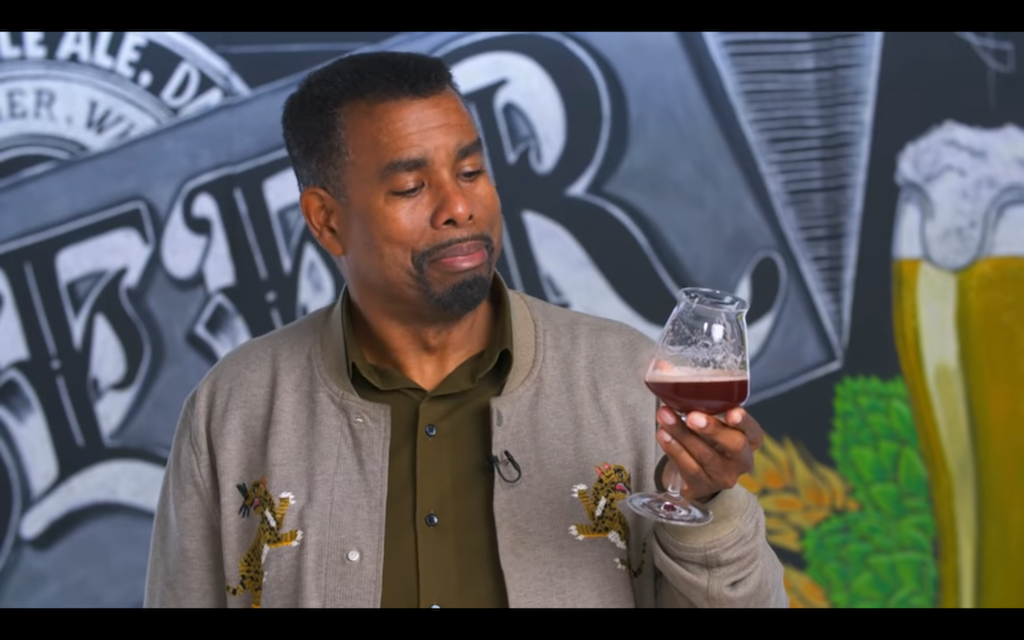
Epicurious delivered a pretty great beginner’s guide into different kinds of beer. My only major criticism is that normally, Price Points offers really good short conclusions between each style and that’s strangely absent here. It might be because craft beer’s enjoyment is less on money spent and more on personal expectations. I also wish Oliver went into detail of why he used a Teku glass for each beer.
Thank you all for joining me on this in-depth examination of how beer is analyzed and judged. Do you have any guesses on what the mystery beers were? Did you feel inspired to try out new beers? Did you want to check out more about Garrett Oliver? I have to say, this is a rare YouTube video where the comments are a glow in the production value and his killer intelligence on the subject.
Related Posts
Colorado Beer Beat | Bi-Weekly Beer Release Guide 8/26... August 26, 2021 | Mackenzie Helms
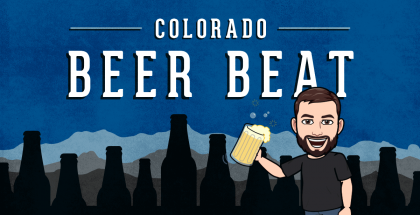
Colorado Beer Beat | Bi-Weekly Beer Release Guide 5/19... May 19, 2022 | Mackenzie Helms

Eight & Sand Beer Co. | Gabagool Italian Pilsner... March 5, 2024 | Robbie Masso
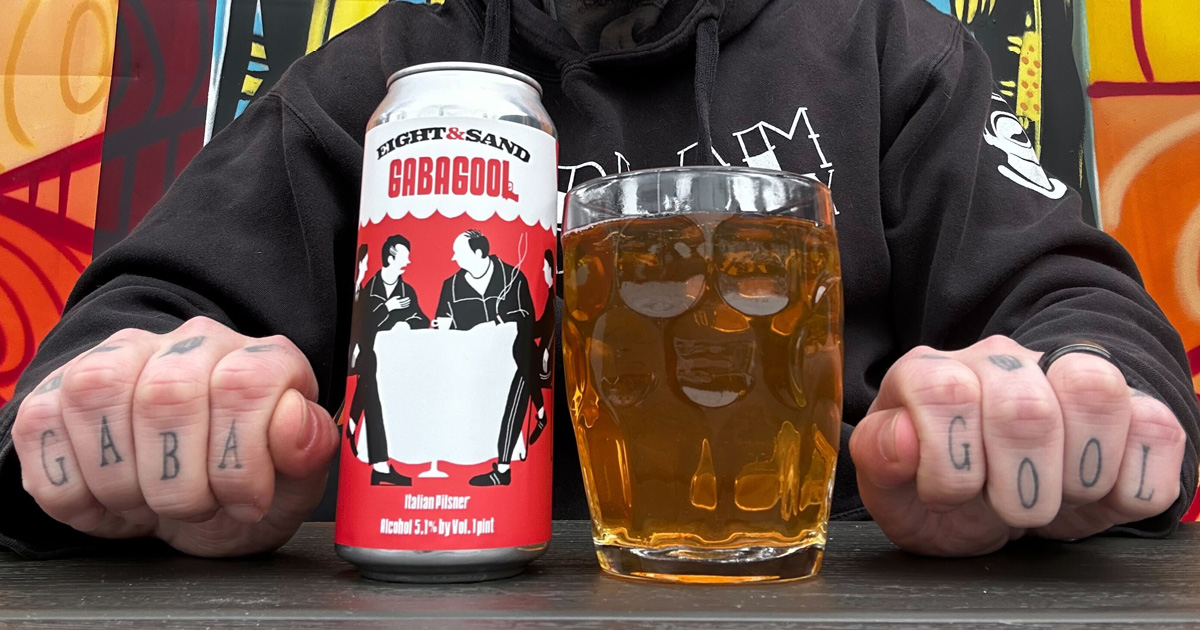
Braven Brewing Co. | White IPA February 3, 2015 | Carly Mento
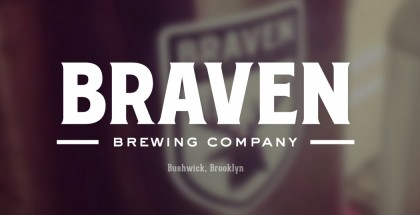
-
April 2, 2020
Doctor LoThanks for this post, was looking for more details on this video and this was the best analysis and criticism I found (even though still didn’t get all the answers). Good job in any case.



Comments